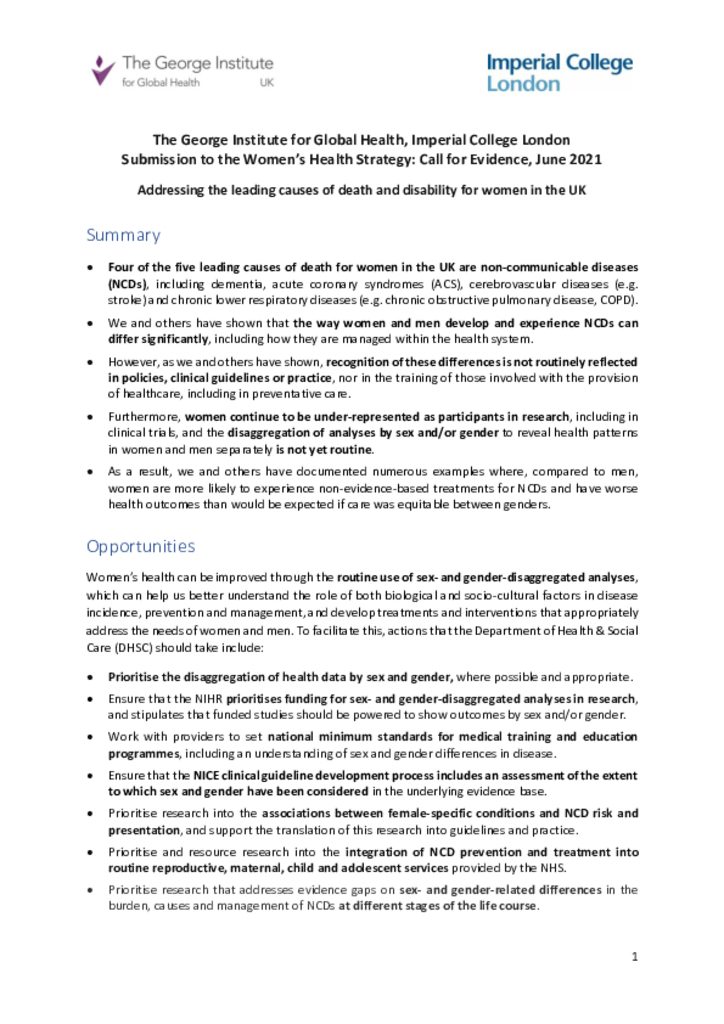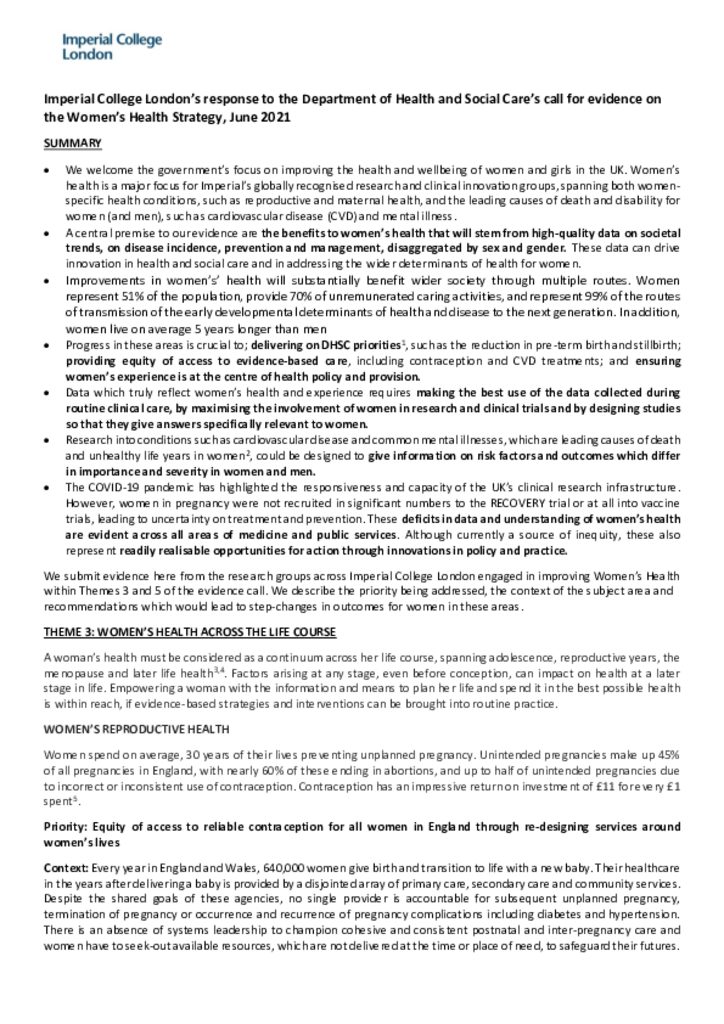
Responding to UK DHSC’s Women’s Health Strategy Call for Evidence
In March 2021, the UK Government’s Department of Health and Social Care called for evidence to inform the development of the government’s first Women’s Health Strategy. In collaboration with Imperial College London, The George Institute for Global Health contributed two submissions to the call:
- The first focused on non-communicable diseases (NCDs), the leading causes of death and disability for women in the UK, and stressed the critical role that sex and gender research has in improving how we understand women’s health and disease
- The second centred around female-specific health issues, including female sexual and reproductive health, maternal mental and physical health and the intersection with NCDs, and gynaecological cancers.
A joint summary of the two submissions is provided below.
Summary
- Women’s health must be considered as a continuum across the life course, spanning adolescence, the reproductive years, menopause and later life. Factors arising at any stage of a woman’s life can impact on future health.
- Empowering a woman with the information to plan her life and spend it in the best possible health is within reach, if evidence-based, gender-sensitive strategies and interventions can be brought into routine practice.
- Four of the five leading causes of death for women in the UK are NCDs, including dementia, acute coronary syndromes, cerebrovascular diseases and chronic lower respiratory diseases.
- How women and men develop and experience disease can differ significantly, including how they are managed within the health system.
- However, recognition of these differences is not routinely reflected in policies, clinical guidelines or practice, nor in the training of those involved with the provision of healthcare.
- Women, and especially pregnant women, continue to be under-represented as participants in research and the disaggregation of analyses by sex and/or gender to reveal health patterns in women and men separately is not yet routine.
- As a result, there are numerous examples where, compared to men, women are more likely to experience non-evidence-based treatments and have worse health outcomes than would be expected if care were equitable between genders.
- The disaggregation of health data by sex and gender should be prioritised, where possible and appropriate.
- Unintended pregnancies make up 45% of all pregnancies in England, with nearly 60% of these ending in abortions, and up to half of unintended pregnancies are due to incorrect or inconsistent use of contraception. Equitable access to reliable post-birth contraception for all women in England is needed.
- Pregnancy-related conditions like pre-eclampsia and gestational diabetes are under-researched but are associated with an increased risk of adverse pregnancy outcomes (e.g. stillbirth and birth trauma) and can reveal those women who are at greater risk of developing these conditions later in life.
- Research into the integration of NCD prevention and treatment into routine reproductive, maternal, child and adolescent NHS services should be prioritised and resourced.
- The safety of treatments in pregnancy must be improved through increasing the involvement of women, including women of reproductive age and pregnant women, in clinical trials.
- Data collected as part of women’s routine care should be used to support maternity service improvement, improve maternal safety and involve pregnant women in clinical trials.
- Deficits in data and understanding of women’s health are evident across all areas of medicine and public services. Although currently a source of inequity, these also represent readily realisable opportunities for action through innovations in policy and practice.
- Data from clinical research and national datasets could be of even greater utility in delivering national priorities for women’s health if they are designed to provide information specific to women’s health across the life course and made more accessible for research and service improvements.
- Improvements in women’s’ health will substantially benefit wider society through multiple routes. Women represent 51% of the population, provide 70% of unremunerated caring activities, and represent 99% of the routes of transmission of the early developmental determinants of health and disease to the next generation. In addition, women live on average 5 years longer than men.











